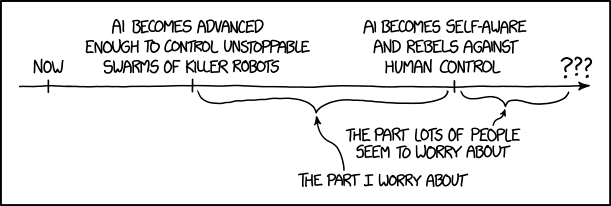Nojatuolistrategi
Ylipäällikkö
Mickin mikistä:
https://www.kauppalehti.fi/uutiset/koneoppiminen-ja-tekoaly-ovat-kuin-internet-steroideilla/W69S2L9V
Tammikuussa maailmalle levisi uutinen Suomesta. Helsingin Porkkalankadulla oli osoitettu ensimmäistä kertaa, miten tietokoneet voivat olla uudella tavalla luovia.
Porkkalankadun ihme rakennettiin niin, että koneet laitettiin pelaamaan itseään vastaan. Materiaaliksi otettiin vapaasti verkosta ladattava, 30 000 julkisuuden henkilöstä koostuva tietokanta. Ohjaamattoman oppimisen mahdollisti Generative Adversial Networks GAN-teknologia, joka sisältää kaksi erillistä neuroverkkoa. Toinen verkko yritti tehdä mahdollisimman totuudenmukaisen valokuvan ja toinen paljasti väärennöksen. Tietokone opetteli tekemään kuvia pelaamalla kissa-hiiri-leikkiä itsensä kanssa. Vastaavalla tavalla olisi voitu tuottaa eläimiä, kasveja, kulkuneuvoja, huonekaluja tai kokonaisia ympäristöjä.
”Rauta on jumalattoman kallista ja sitä pitää päivittää parin vuoden välein. Siksi useimmat yliopistot eivät pysy enää vauhdissa mukana, valtiollisista toimijoista puhumattakaan.”
Riittävästi potkua on lähinnä yritysjäteillä kuten Facebookilla, Amazonilla, Googlella, Microsoftilla tai GE:llä.
”Tarvitaan syvällistä osaamista, paljon omaa tai julkista dataa sekä saavikaupalla laskentatehoa. Sitten alkaa syntyä ihmeellisiä sovelluksia uskomattoman nopealla tahdilla.”
Työvoiman tarve alalla on niin kovaa, että yliopistot imetään heti kuiviin.
”Mielikuvitus on nyt ainoa raja, ei enää teknologia”, Honkavaara sanoo.
”Itseohjautuvat autot, laivat, bussit ja lentokoneet. Liikkuminen, syöminen ja asumisen palvelut. Logistiikkaketjujen automatisointi. Lääketiede, öljynetsintä, sään ennustaminen”, hän luettelee.
Suomen Nvidia sai alkunsa 12 vuotta sitten, kun amerikkalaisyritys osti Honkavaaran johtaman Hybrid Graphicsin 3D-osaajineen.
https://www.kauppalehti.fi/uutiset/koneoppiminen-ja-tekoaly-ovat-kuin-internet-steroideilla/W69S2L9V

